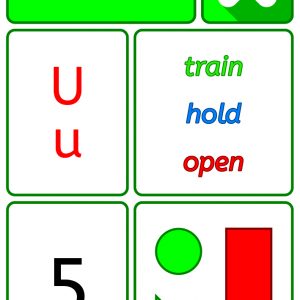Subtotal: €5.00
In our previous post, we examined 5 vocabulary-building strategies.
- Word-building by adding affixes;
- Considering multiple meanings of a word;
- Identifying synonyms and antonyms;
- Explaining idioms featuring a given word;
- Understanding proverbs featuring a given word.
Continuing this focus on vocabulary development, here is another simple technique to boost communication in the classroom.
All you need to remember is ABC!
ABC Technique
A – Agree
B – Build (upon)
C – Challenge
Pupils are encouraged to do one of the above in response to a statement.
Using this technique during discussions promotes speaking and listening skills and encourages greater class participation.
Introducing ABC
Step 1
When introducing pupils to the ABC technique, provide some simple true / false statements and model sentence structures for agreeing / disagreeing and substantiating this viewpoint with evidence.
It is important to start with simple sentence structures, e.g.,
I agree / disagree with you because …
I think (name) is correct / incorrect because …
Their evidence here will be statements of fact.
Step 2
Next, provide more nuanced statements, where a yes / no answer does not exist, and ask pupils to give their opinion and provide a rationale for it.
Pupils should use the same sentence structures as before. This time they will be required to provide evidence to support their opinion.
Step 3
The third step is having pupils providing their own viewpoints and their peers discussing these with them. To achieve this, it is advisable to teach some of the following sentence stems:
In my opinion / view, …
I suggest / believe / feel / think / consider …
To my mind, …
Once pupils are confident is sharing with the class, it is important to model more complex sentence stems for agreement / disagreement and to demonstrate how to build on the arguments of others. Some of the following stems may be helpful in this regard.
Agree
I agree with (name) when (s)/he states ___ as …
Undoubtedly / certainly, ______ is correct as …
For several reasons, I feel this is true, namely …
In my opinion, one cannot argue with (name’s) statement as …
(Name) makes an interesting point because …
Build
Further to the point made by ____, I also think
In addition to the point ____ made, I …
Building on (name’s) point, I …
Moreover, we must also remember …
Beyond this, I must also point out …
Another reason we must not forget is …
Challenge
I disagree with (name’s) statement because …
In my opinion, the reverse is true as …
From my point of view, (name)’s assertion is incorrect because …
To my mind, it is necessary to challenge (name’s) stance as …
Alleging (the particular statement) is incorrect for the following reasons …
Whereas (name) suggests ____, I believe …
ABC with CardEd
To illustrate the ABC technique more clearly, I have generated a series of statements using these CardEd Set 4 cards (which should be displayed for pupils).

Some are simple true / false statements to introduce pupils to the idea of providing a reason for their answer; others are more complex and pupils will have to consider how to justify their stance.
Discuss:
- Do pupils agree / disagree with these statements?
- Can they substantiate their viewpoint with evidence?
- In responding to any of the statements, can the pupils build on the argument made by one of their peers?
Statements:
- There is only one odd number on the cards.
- The smallest difference between the numbers shown on the cards is 60.
- You can make green using 2 of the other colours on the cards.
- There are 3 matching pairs in the symbol zones.
- There is no other way to spell the /ow/ (as in cow) sound.
- Only capital letters have lines of symmetry.
- You can dive to the sea bed but not the ocean bed.
- The Nile is the longest river in the world.
- Console as a verb does not sound the same as console as a noun.
- In my opinion, the slowest movement on the cards is amble.
- I believe jumping into a shallow pool is dangerous.
- I think people who walk with a swagger are arrogant.
- If you are absent for 10% or more of the school year, you should have to repeat it in my view.
- Climbing Mt. Fuji should be banned in my opinion.
- Leonardo da Vinci was correct in saying sight is the most important sense.
As an additional challenge, can the pupils generate their own statements for discussion in class?
Frequent use of the ABC technique supports the development of strong speaking and listening skills. Moreover, it is an excellent way of showing pupils how much they can learn from one another.

 Unit of Inquiry into a Country - Comprehensive, Editable PPT
Unit of Inquiry into a Country - Comprehensive, Editable PPT  CardEd Learning Activities and Games Download - Visual Display Cards (Set 1)
CardEd Learning Activities and Games Download - Visual Display Cards (Set 1)